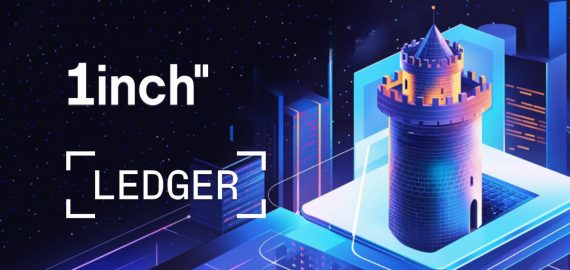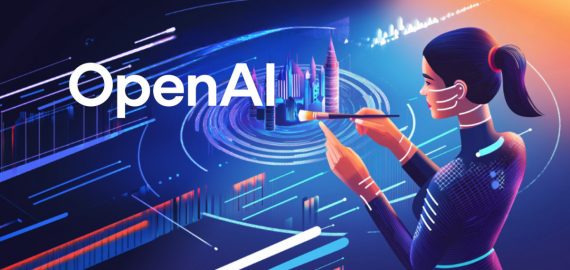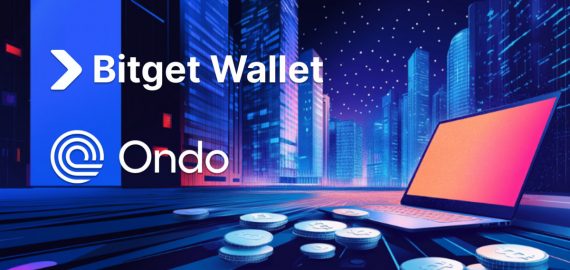Inside Aragon’s Bold Bet on the Future of Decentralized Power


In Brief
Anthony Leutenegger, CEO of Aragon, shares how DAOs are maturing in 2025 and evolving toward more resilient, transparent, and scalable governance systems.

Few leaders have seen the development of DAOs from as many angles as Anthony Leutenegger, from early experimentation to steering one of the ecosystem’s most influential governance projects. In this interview, the Aragon CEO reflects on how decentralized governance is maturing in 2025, why the next wave of DAOs will look nothing like their predecessors, and what it really takes to build resilient, transparent decision-making systems at scale.
Anthony, could you share your journey into Web3?
I’ve been working at Aragon for four and a half years. I joined crypto because I found this great project that used to be a subsidiary of Aragon called Vocdoni, and they were building a blockchain-based voting protocol. Its goal was eventually to have nation-states running incorruptible elections.
I thought, what an incredible and perfect use case for blockchain technology. We’re in a world and industry where there’s a lot of speculation and money flowing around, and those are legitimate use cases, but being able to have incorruptible elections could solve a plethora of world problems.
That’s why I applied for a job at Vocdoni. I eventually moved into the Aragon project, which owned Vocdoni at the time and focused more on governance, capital distribution, and token economics at a much higher level than just voting. I later took over the company, and now things are going great.
Could you give us an overview of Aragon’s current mission and how it has evolved over the past couple of years?
Yeah, our current mission has definitely evolved over the last few years. It used to be about allowing organizations to experiment with governance at the speed of software. The point was that you could have decisions executed without trusted intermediaries. It’s the same as making a payment on a blockchain; you remove the intermediary. With blockchain technology, we can remove intermediaries from executing an action. In the traditional world, people vote or participate, but actions usually require others to execute them.
Now, decisions, whether it’s moving funds, upgrading code, or granting access, can be made by a larger group of people without anyone in the middle. It becomes very censorship-resistant. It’s the first time in history we can do this because we abide by the code as law.
That was Aragon’s old mission, and we still work heavily in governance. We still allow organizations to build their access-control mechanisms for how they govern their code base. For example, when Lido wants to upgrade its code, they do it on Aragon’s smart contracts. We secure their code base. If Katana wants to move money on the new Polygon project, that’s the same thing.
Now we’ve expanded into tokenomics. We support projects in building their own governance systems, tokenomic systems, and growth flywheels. Our mission is much broader today.
In your view, what are the key differentiators of Aragon’s governance framework compared to other DAO tooling or platforms?
Yeah, we definitely have the newest modular model. We separate the vault and core permissions from the governance methodologies, and anyone can install these methodologies or plugins to achieve what they want. For example, if you want a governance type that isn’t token-based voting, you can install the multisig plugin or the digital identification plugin.
You can even install multiple plugins at the same time, allowing different groups, maybe a multisig and token holders, to govern together. It’s highly customizable, upgradable, and always involves tokenomics. Tokens drive almost everything in our industry, so with the Aragon stack, you can create lockers, stakers, and mechanisms for locking, staking, and capital distribution. It’s modular, customizable, and future-proof.
What is the strategic significance of modular governance contracts, for example, plugins for scaling organizations over time?
Yeah, it’s super important. Major projects want to adjust governance and capital flows more easily, but many can’t do it safely because they’re stuck with old, heavy, library-based contracts. Making things modular allows easier adjustments. Upgrading becomes as simple as uninstalling and installing a new plugin, which is just a small part of the code base.
You can upgrade from multisig to token-holder voting as you decentralize over time. You can add staking mechanisms for token holders to control capital flows. It makes governance safer, more customizable, and more future-proof. It’s unquestionably a better system.
What are the most important policy or regulatory trends you see that will affect on-chain organizations in the next 12 to 24 months?
Yeah, that’s a great question. What we’re seeing, especially from the United States and from what firms like a16z are discussing, is that on-chain ownership or on-chain control will become the most important parameter defining decentralization. It won’t necessarily look like the old DAO model where everyone votes on everything.
It will focus on a smaller surface area of control, but that control must be decentralized, meaning token holders must actually have control without an intermediary foundation or multisig. Or the system will need to be immutable, where no individual or group can change the code for personal benefit.
So decentralization will be defined by control and ownership. I think we’ll see less generalized governance and more focus on governing specific things that must be decentralized, protocol upgrades, fee switches that distribute value to token holders, and similar components.
How do you prepare for adapting to these regulatory changes?
Luckily, we’ve been preparing for years. Three years ago, we already saw this problem and started moving toward addressing it. On our current stack, you can control your protocol in a highly decentralized way without having to vote on everything. Different people can control different things, and projects can define how access control is structured.
On top of that, we create automated and programmatic capital-distribution flows. Projects that want to accrue value to their token can do so in a programmatic, automated way that isn’t centrally controlled, making it more likely to meet future regulatory expectations, something our competitors cannot do.
What are the main risks you foresee for organizations adopting on-chain governance, and how does Aragon seek to mitigate them?
I think the technological side is mostly solved. We’ve created a very safe environment for organizations, and we’ve secured 45 billion dollars in assets since 2017–18. For me, the bigger risk is what is being controlled and by whom.
Right now, many projects relying on token holders for security face a problem: security degrades over time if the token has no value. If a token secures a protocol but the project isn’t generating revenue, there’s no incentive to hold it. People sell, decentralization decreases, and the system breaks down.
We need tokens to hold value and secure something meaningful. When that happens, the system naturally becomes more secure.
For an organization considering launching a DAO through the Aragon app, what key strategic governance decisions must be made upfront?
They need to understand who will control what. They also need to understand the value of the token that controls protocol parameters, which is essential. Other considerations include whether they want a VE model, a locker model, for token holders to lock or stake, or whether they want an ERC20 vote-standard token. These are nuanced decisions, and they should reach out to us before launching.
But most importantly, they must understand where their product is heading, how it will be controlled, and why people will participate in ensuring it remains decentralized.
Could you share any success stories or case studies where Aragon’s governance architecture significantly improved organizational outcomes?
Yeah, for sure. Let’s look at Curve. Many projects are now adopting the VE gauge mechanism, which is becoming popular again. The first version of ve & gauges was built in Aragon in 2020 by Curve. VE stands for vote escrow, meaning a token holder locks tokens for a period and gains specific voting power based on parameters set by the project.
The idea is that because they are locked into the system, they want the token to be worth more when it unlocks. They are often given power over distributing capital, liquidity, or other important resources. They vote in the long-term interest of the protocol. The more they participate, the more rewards they receive.
This creates a growth flywheel, incentives to hold, participate, and make good decisions. Projects with decent product-market fit using ve & gauges, Curve, Aerodrome, Katana, and others, have seen positive outcomes, including a higher percentage of tokens locked and increased valuation.
How do you view the future of governance standards, best practices, auditability, and transparency for on-chain organizations?
I don’t think we’re at a technological point where we should define strict standards yet. It’s still too early. We need more organic adoption and more tooling before things ossify into standards.
However, governance standards will be shaped by regulation, particularly around how capital and incentives can be distributed. Projects ultimately want to generate revenue and increase token value, so they’ll learn and adapt as clearer regulations emerge. As adoption grows and more use cases appear, we’ll be able to define better best practices.
We already see early examples. Lido is a successful DAO operating in a strategic way. The ve & gauge mechanism works well for DEXs like Curve. And DUNA is emerging for projects like Uniswap, with decentralized governance over specific parameters.
We’re starting to see the first hints of standards and best practices.
Disclaimer
In line with the Trust Project guidelines, please note that the information provided on this page is not intended to be and should not be interpreted as legal, tax, investment, financial, or any other form of advice. It is important to only invest what you can afford to lose and to seek independent financial advice if you have any doubts. For further information, we suggest referring to the terms and conditions as well as the help and support pages provided by the issuer or advertiser. MetaversePost is committed to accurate, unbiased reporting, but market conditions are subject to change without notice.
About The Author
Victoria is a writer on a variety of technology topics including Web3.0, AI and cryptocurrencies. Her extensive experience allows her to write insightful articles for the wider audience.
More articles

Victoria is a writer on a variety of technology topics including Web3.0, AI and cryptocurrencies. Her extensive experience allows her to write insightful articles for the wider audience.

















































